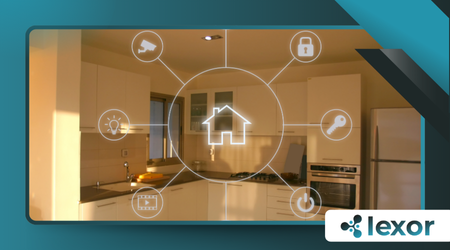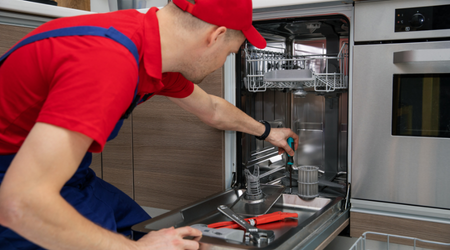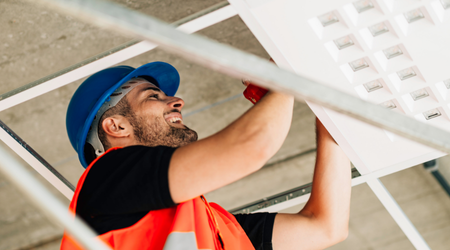Smart Home Maintenance: Tips to Keep Your System Running

The dream of a seamless, automated home is now a reality for many, smart home maintenance with devices from smart thermostats to automated lighting transforming our daily lives.
But what happens when the technology that simplifies your life starts to lag or malfunction? This is where proactive smart home maintenance becomes not just a good idea, but a necessity.
A connected home is a system, and like any system, it requires regular care to perform at its peak. Failing to do so can lead to frustrating downtime and a less-than-intelligent house.
The Foundation: Your Network is Everything
Before we dive into the gadgets, let’s talk about the heart of your smart home: the network.
A weak Wi-Fi signal or an overloaded router can turn your automated paradise into a collection of disconnected plastic boxes.
Think of your Wi-Fi as the central nervous system of your home; if the signals are firing slowly, the entire body will feel it.
To ensure everything communicates properly, consider a router upgrade every two to three years.
Also, placing your router in a central, open location can significantly improve signal strength throughout your home.
Software Updates: The Easiest Step You’re Skipping
Ignoring software updates is a common mistake and a major vulnerability.
These updates aren’t just for adding new features; they often contain critical security patches and performance enhancements.
Most smart devices have an auto-update feature, but it’s a good practice to manually check for updates every couple of months.
A quick scan of your device’s app will show you if any updates are pending. This simple act of vigilance keeps your system secure and running efficiently.
++ Using Smart Cameras to Monitor Your Home Remotely
Cleaning Your Devices: Beyond the Dust
While it may seem obvious, regular physical cleaning of your smart devices is crucial for their longevity and performance.
Dust can obstruct sensors on devices like smart cameras or motion detectors, causing them to misfire or fail completely.
For example, a layer of dust on the lens of your smart doorbell camera can blur the image, making it harder to identify who is at your door.
A quick wipe with a microfiber cloth is often all that is needed to keep these devices in top shape.
Battery Health: The Unsung Hero of Smart Living
Many smart home devices, such as door and window sensors, remote controls, and some security cameras, rely on batteries.
Their lifespan is finite, and a dead battery can render a device useless at a critical moment. It’s a smart habit to create a replacement schedule.
For instance, you could plan to replace all sensor batteries in the spring and fall. This routine ensures no device is left unpowered, guaranteeing continuous protection and automation.
The Power of Routine Diagnostics
Just as a car needs a regular tune-up, your smart home benefits from periodic diagnostic checks.
Most smart home hubs or apps have a “health” or “status” section that shows the connectivity and battery life of your devices.
A quick review of this status dashboard once a month can reveal potential issues before they become full-blown problems. This proactive approach saves you from the frustration of a system failure.
++ How Smart Locks Work and Are They Safe?
The Digital Declutter: Keeping Your System Lean
Over time, you might accumulate a number of inactive or redundant devices in your smart home ecosystem. These can create unnecessary network traffic and complicate your setup.
Deleting devices you no longer use from your hub and apps is a smart way to streamline your system. A clean, uncluttered system is a responsive and reliable system.
This practice is a key component of effective smart home maintenance.

Table: Common Smart Home Maintenance Tasks & Frequency
| Task | Recommended Frequency | What to Check |
| Network Health Check | Monthly | Router performance, signal strength, device connectivity |
| Software Updates | Quarterly | Manual check for all device apps |
| Physical Cleaning | Bi-annually or as needed | Dust-free sensors, cameras, and vents |
| Battery Replacement | Annually or as needed | Sensor batteries, remote controls |
| Digital Declutter | Bi-annually | Remove inactive devices from apps/hubs |
Why is Proactive Maintenance So Important?
A study from Parks Associates indicates that in 2024, nearly 70% of smart home device owners experienced a technical issue.
While many of these issues are minor, they highlight a growing need for user education on proper care. The lesson is clear: a little effort goes a long way.
This isn’t just about functionality; it’s about preserving your investment. A well-maintained system will last longer and perform better, providing the comfort and security you purchased it for.
This continuous care is central to effective smart home maintenance.
++ How to Set Up a Smart Home on a Budget
A Common Pitfall: The Set-and-Forget Mentality
Many users fall into the trap of a “set it and forget it” mindset. They install a device, configure it, and then never think about it again until it fails. For example, consider a smart lock.
A user might install it and trust it implicitly without ever checking the battery status. The inevitable result is getting locked out one evening when the battery finally dies.
That’s why regular checks and updates are non-negotiable for a truly reliable smart home.
This common error highlights a fundamental truth about technology: it requires care. Your home automation system is no different from a garden.
If you plant the seeds and then never water or weed, the plants will eventually wither and die. Similarly, if you install smart devices and then neglect them, their functionality and reliability will decline over time.
++ Maintaining your smart home devices is crucial to ensuring they function effectively and last longer
The Cost of Neglect
Neglecting your smart home can have real consequences, both in terms of convenience and security.
A poorly maintained system can lead to security vulnerabilities, allowing unauthorized access to your network.
Furthermore, failing devices can disrupt your daily routines, turning convenience into a hassle.
Effective smart home maintenance is the antidote to these problems, ensuring your system remains a source of comfort and security.
Troubleshooting: A Proactive Stance
When a device goes offline, many people panic and immediately assume the device is broken.
The first step should always be a simple reboot unplugging the device and plugging it back in after 30 seconds. Often, this simple action can resolve connectivity issues.
If the problem persists, checking the device’s manual or app for specific troubleshooting steps is a smart next move.
Ultimately, the key to a thriving smart home ecosystem lies in proactive smart home maintenance.
It’s not about waiting for things to break, but about creating a routine that keeps everything running smoothly. Doesn’t your investment in technology deserve a little attention to ensure it serves you well?

Concluding Thoughts
Your smart home should work for you, not the other way around.
By integrating these simple maintenance habits into your routine, you can ensure that your automated life remains seamless, secure, and stress-free.
From checking your network to replacing batteries, these small steps collectively make a huge difference in the long-term performance of your system.
This proactive approach to smart home maintenance turns a collection of smart gadgets into a truly smart and reliable home.
FAQ
Can I automate smart home maintenance tasks?
Yes, you can! Many hubs and apps allow you to set reminders for tasks like checking batteries or running diagnostic tests. Some systems can even alert you when a device’s battery is low.
How do I know if my router is outdated?
A good rule of thumb is to check if your router supports the latest Wi-Fi standards (currently Wi-Fi 6E).
If your router is more than three years old and you’re experiencing connectivity issues, it might be time for an upgrade.
Is it safe to use third-party smart home maintenance apps?
Be cautious. Always use official apps from the device manufacturer or a reputable hub provider. Using unverified third-party apps can create security risks and lead to data breaches.
What’s the best way to clean my smart home devices?
For most devices, a soft, dry microfiber cloth is best. For hard-to-reach areas, a can of compressed air can be useful.
Avoid using harsh chemical cleaners, as they can damage the plastic and sensors on your devices.
